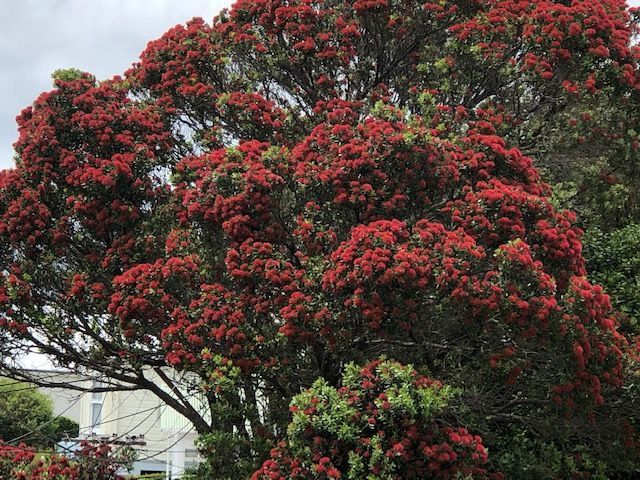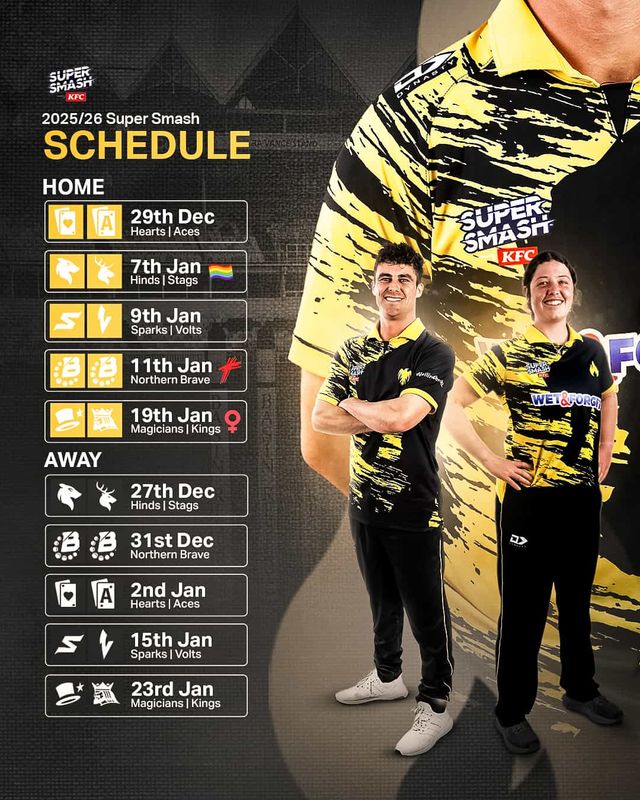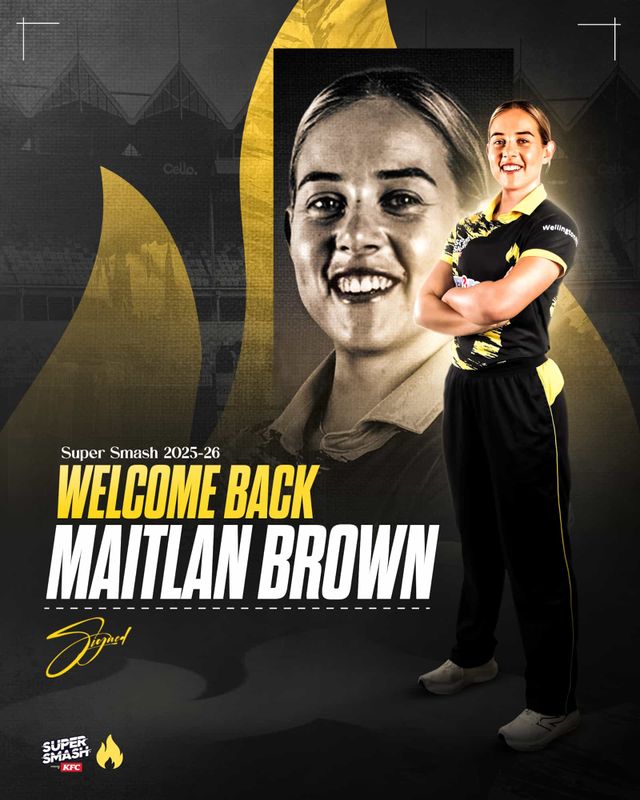Urban Dream Brokerage and Art
-
-
The whatever palace by 5ever books
- Urban Dream Brokerage
- Community space! Bookshop! Films! Discussions! Dance class! Poetry and writing workshops! Community dinners every Wednesday! Chutney making and cooking classes! Art Making! Karaoke! All is free and all are welcome. See ya at the Palace!
- Submitted by tonytw1
- Tagged as:
- books
-
-
-
pahikara in support of NO HEA KOE? KO WAI KOE?
- Urban Dream Brokerage
- Collaborating with two of Wellington’s most prolific & unique creatives, Marcus McShane & Suzanne Tamaki, alongside the renowned Ans Westra collection, managed by Suite Gallery. This activation, aims to bring the imagery onto the streets from which they were taken, with the hope being to reconnect whānau of the subjects, with these treasured photos people in the images. On the nights of Nov 21st & 28th, public can catch a glimpse of the iconic Ans Westra imagery as Marcus McShane & his bike powered projections wind their way through the Cuba St precinct, or follow the bike to capture the entire presentation.
- Submitted by anon89b361c1-8c62-44aa-a864-0e5a956c908d
- Automatically tagged as:
- art
- singing
-
-
-
Green green room
- Urban Dream Brokerage
- A pilot scheme for a resource library for the independent theatre community in Wellington. This project has been brought to reality by Trick of the Light, Barbarian Productions, Fiē Neo, Marcus McShane & Anne-Lisa Noordover.
- Submitted by anonbf694b50-5a5e-4b82-aa93-2ccaa3141afc
- Tagged as:
- theatre
Courtenay Place, Mount Victoria, Wellington, Wellington City, Wellington, 6011, New Zealand (OpenStreetMap)
-
-
-
Doc Edge
- Urban Dream Brokerage
- Prepare to be transported into a realm where reality transcends imagination, where storytelling takes an awe-inspiring leap into the future. We are thrilled to extend an exclusive invitation to you and your family to embark on an unforgettable journey at the Doc Edge XR Exhibition, New Zealand's most captivating showcase of Augmented Reality (AR), Virtual Reality (VR), breath taking installations, and mesmerizing digital immersive stories. Get ready to witness the birth of a new era in storytelling!
- Submitted by tonytw1
- Tagged as:
- exhibitions
-
-
-
Mārioke with the Māori Wardens
- Urban Dream Brokerage
- Kei te whakaari ngā kamu waiata o Ngā Wātene Māori o Te Whanganui-a-Tara. The Māori Wardens of Te Whanganui-a-Tara extend an open invitation to the city to join for community waiata sing along throughout June, let’s collectively warm our souls this winter!
- Submitted by tonytw1
- Automatically tagged as:
- art
- singing
-
-
-
Party of Rare and Unearthly Treasures — Urban Dream Brokerage
- Urban Dream Brokerage
- Erika Grant proudly presents a 6 week artist residency for ‘Party of Unearthly & Rare Treasures’. Proudly supported by Urban Dream Brokerage, and Wellington City Council, working together again on another incredible commissioned public art activation in 2023! Erika Grant, based in Te Whanganui-a-Tara, kicks off her three part journey throughout May, culminating with two major public art events in June, with the main ‘Party of Unearthly & Rare Treasures’ celebration taking place on June 10th.
- Submitted by tonytw1
- Automatically tagged as:
- art
- singing
-
-
-
Soft Serve Social — Urban Dream Brokerage
- Urban Dream Brokerage
- A collective desire for joy, safety and empowerment has created a need for Playescape - an urban swing set. What are the ways we can feel present, calm and connected when we are alone in public space at any time of day? Playescape will be a valuable experiment in re-balancing personal/emotional wellbeing in the urban environment of Te Aro. The act of sitting alone on a bench in the street is something that everyone should feel safe to do. However, in reality that isn’t always the case. Can we change this?
- Submitted by tonytw1
- Automatically tagged as:
- art
- singing
Glover Park, Te Aro, Wellington, Wellington City, Wellington, New Zealand (OpenStreetMap)
-
-
-
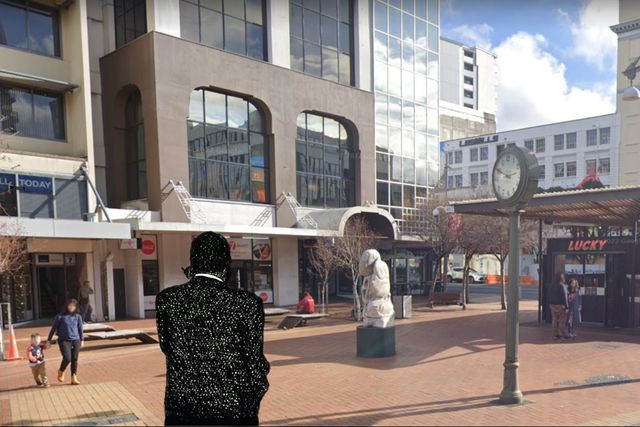
Call/Waiting
- Urban Dream Brokerage
- Call/Waiting is an app-enabled interactive experience which invites you, the participant, to dial into a curious series of voicemails while you make your way around Pōneke. It’s part pick-a-path novel, part audio tour. A brand new work by Olivia Mahood and Poppy Serano (O+P Works), made in collaboration with Pickpath. Call/Waiting is a 30 minute experience. It begins when you access the app via your Apple or Android smartphone. You control your experience and how long you spend in it.
- Submitted by tonytw1
- Automatically tagged as:
- art
- singing
-
-
-
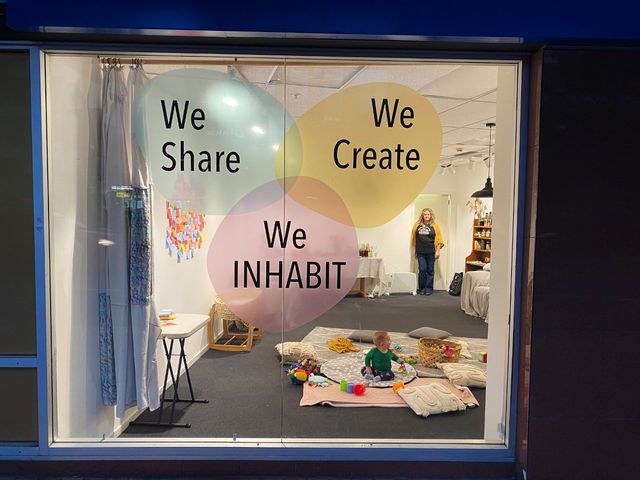
The artist as many other things first
- Urban Dream Brokerage
- Holly McEntegart in conversation with Anne Noble, facilitated by Mark Amery <figure class=" sqs-block-image-figure intrinsic " > Image: Anne Noble Merging her work as an artist, mother and full spectrum doula, Holli McEntegart recently brought something remarkably different to the bustle of Wellington’s Courtenay Place, in an exploration of art as a social practice. Providing a warm, calm space for participation, Inhabit brought together mothers and their infants to examine how community, cultural and whānau postpartum care has changed in Aotearoa, sharing experiences in real-time and as oral history. A private issue was brought into a public realm. Rethinking the artist’s role in society, McEntegart was supported by artist Anne Noble in a project commissioned by Letting Space for vacant space activators Urban Dream Brokerage. McEntegart now has plans to bring the project to Auckland. Here are Holli and Anne in conversation. Mark Amery Anne Noble: Letting Space and Urban Dream Brokerage have made a really remarkable contribution to the Wellington art scene. Letting Space positioned itself as an entity that sits outside the conventional domain of the gallery, where the artist is mostly defined e as a producer of objects and artefacts. They offered an experimental space and an invitation to artists to expand the ecology of contemporary art and provide support for them to provide a new kind of experience for communities and publics to engage with contemporary art I see Inhabit as a perfect example of the kind of project that Letting Space and Urban Dream Brokerage were established to nurture, enable and support. When I first thought about your ambition for Inhabit: to marry both your practices as an artist and a full spectrum doula, one of my first questions was about the expanded role of the artist in a social practice. How is your work first and foremost art while being shaped by other practices and concerns? What came to mind was a book [^1] I’ve had on my bookshelf, which has on its cover The Artist As followed by a list: that includes such descriptors of the artist as .. producer; the artist as… archivist; the artist as… ethnographer; the artist as… catalyst; the artist as… orchestrator; the artist as… poet; the artist as… curator. And it ends with this really beautiful phrase in capital letters: AND MANY OTHER THINGS FIRST. This points to the fundamental premise of your art practice - driven and formed by another whole domain of expertise, professional practice, experience and activist concerns. <figure class=" sqs-block-image-figure intrinsic " > Image: Anne Noble | Infant massage with Jo Chambers. From left: Megan Rodgers and Jasper, Jo Chambers from Blissful Bubs You define yourself as a social practice artist but you also practice as a full spectrum doula. How did you arrive at the idea of merging your practice as an artist with your life as a mother, your interest in the post-partum experience and your activism in this space? Holli McEntegart: You and I talked a lot about the artist as a conduit; or as activator. As a young artist I was always really interested in capturing images of moments that had complicated stories behind them. I realised that my interest was often more in the story; how we got to this point; the full stop. The work was always, for me, in the negotiation of getting to that image - with the image itself feeling lacklustre in comparison to that journey. Then when I moved to Pittsburgh to complete my Masters I found that there was a greater focus on social practice as a role for the artmaker. The driving need for me has always been to build relationships, and therefore community. So when I was taking photographs I would spend months getting to know people, navigating the permission, not just to be there, but to be accepted; to belong. I’ve joined every group under the sun! A loon (an aquatic bird) counting group in Maine, a porcelain painting group in Mt Albert, a bluegrass group, banjo club and a barbershop quartet in Pittsburgh, and a cake decorating group in Otara, to name a few. But I didn't feel like I had the right to be there unless I was really an accepted part of the community. That came to a head for me in Pittsburgh when I joined a semi-gated spiritualist community called Lily Dale, and began making work out of the readings they were doing for me. I would spend eight months with them before I could make that work. By the time I was living in New York there were many grants, residencies and galleries supporting a socially engaged framework of art making. My eyes were opened to the fact that this community exchange and the energy I was investing into relationship building was not only valid, it was the work.That really gave me permission to move past just documenting my work with photographs or videos and writing and to pull the focus back to the process, the making and the relationship tending. Research is a huge part of my process, whatever I’m working on I’m always off down a research tunnel. So, when I got pregnant in New York with my first child Arlo I went on a huge journey to understand pregnancy, birth and everything that was happening to my body. I discovered that in New York City, the maternal mortality rate in pregnancy, birth and early postpartum is astoundingly high, and that black women are 12 times more likely to die in childbirth than white women. OB’s are often pushing for a lot of unnecessary interventions within the hospital system and midwives are not as commonly used, though that is changing. I come from a family of home birthers in New Zealand, it was normalised and seemed like the obvious place for me to birth, but only around 1.5% of people give birth at home in the US, so it's quite a radical thing to do in that context. I was so lucky that I had a neighbour and friend who was training to be a midwife and was working as a birth doula. Through her I discovered this group of folks called doulas. I started learning about the role they play in birth work, about reproductive and birth justice advocacy, and about everything I was going to need to know to birth my baby at home while being supported by a midwife and doula team. <figure class=" sqs-block-image-figure intrinsic " > Image: Anne Noble New York City is so compact, we had a tiny apartment and I had a home studio. My son, Arlo, was born underwater, in a birth pool on my studio floor. At that point I had been working for some time within these spiritualist communities. I had been really delving into why people were seeking healing in these communities and what it meant to be constantly practising these healing rituals. Birthing my son in my studio was like an epiphany, I was on a healing journey myself and this was a part of the work. Birth was incredibly healing for me at that point in my life and then, like many people, postpartum was a completely different beast. Like most people experiencing giving birth far from their home and family, I just felt an intense lack of support from the world. And with that a deep loneliness. I was so homesick. My parents came to visit for two weeks which was incredible, but it went so fast. A few good friends showed up as best they could but I was living and working as an artist in New York, I didn’t know anyone with babies or even young kids. People are busy - for everyone else, life goes on. It’s the postpartum person that is stuck in stillness, but constantly working. It was a totally different world. You get the sense that everybody shows up for birth, everyones interested, you learn so much about pregnancy and childbirth, tracking the changes in your body all the way through to this kind of event, and then everyone leaves, and you’re left in charge of a human. It’s wild, uncharted territory and no-one’s told you that much, or what they have told you is irrelevant, biassed, outdated and sometimes even harmful. I longed for my family, mostly for my mum. I found myself floating out to sea, and there was a realisation that no one was going to rescue me - I had to rescue myself. And to do that I needed to dive even deeper into what was happening to me, go down that research tunnel again and find out what support there was in the world and how I could heal. That led to me doing Seen, a postpartum doula mentorship programme with Birdsong Brooklyn, and learning constantly - four or five months too late - what could have rescued me before I needed rescuing! It was eye opening and there was a lot of deep grief about the care I had missed out on, and the ways I could have been supported. I was diving deeply into the profoundness of becoming a mother and the reality of how much is lacking in the world in supporting new parents. I just fell in love with this idea that we could be healing collectively if we just looked after each other better and shared our knowledge. I built my community from that in New York in that first year of parenting. At that point I had been working for three years as the studio manager for an incredible artist, Janine Antoni, who is also a parent and understands that mothering work. It was a huge question for me: how do I keep working in the world as an artist, be able to show up as a mother and earn enough money to live? How do I juggle all of this and stay tethered to myself? I gave birth to my son when I was 38 and I was being called a geriatric mother by the medical system. It scared me. I wanted to breathe in my baby, just inhale him and not miss a second. But how do I do that and keep up my practice? Well… I just gave birth to my son in my studio…. It was these layers of realisation: this labour is the work. I have to reframe my life so that this labour of the home, the labour of care, of mothering, is seen and valued. So I left my job in the studio with Janine and went straight into postpartum doula training. I needed to be immersed in the community in the same way I had been with the spiritualists or the cake decorators or the bird counters in Maine. <figure class=" sqs-block-image-figure intrinsic " > Image: Holli McEntegart | Multiples Feeding Support Group. From left: Jessie Lee Broadbent, anon Anne: You have talked about your journey as a photographer engaging with communities, and how the outcome can be separated from those experiences that feel like part of the work. That is n true for many documentary photography projects.You’ve also described beautifully your dissatisfaction with being both outside a subject and yet needing to be right in the heart of it. The notion of a social practice artist is less common in New Zealand than in the US. It has currency in art schools, but my instinct when we first met and talked was that you have a really highly evolved practice in which you prioritise your relationship as an artist to the post-partum communities you engage with Your work begins with you your life as a mother and your practice as a doula being the site of public art activism, of making the post-partum world experience shared and visible. How have you then addressed the visibility of this as an artwork? You only need to look at the project website to see the level of community engagement and the number of people you have drawn into this space. It’s really significant. Those workshops - people flocked to them. But to make it public, visible to participants and to audiences how does that work? Holli: What comes first for me is the relationship, being a good community member and trust. I come at relationship building and getting people involved with their whole heart; with a genuine interest and respect. I have to have something at risk as well. Inhabit was a year in the making, but the day we opened, with a multiples lactation support workshop. We had six twin mums and probably six assistants or helpers, including grandmas, friends, lactation and doula support. That's 12 babies plus Indigo [Holli’s own baby]. Over 24 bodies breathing life into the space. That was the moment that the work became art; that it became an artwork. It was activated by the community of people in the room and their energy. Up until then there’s a lot of risk on my part because I don’t know who is going to show up and what they will bring on the day. The work is filled with intention but it has to meet people where they are and vice versa, and for that reason, it’s never the same, it evolves and unfolds and, much like mothering, I must surrender to it. I think I’m comfortable leaning into the unknown. Within a socially engaged practice you really don’t know how your participants or your audience (the public) are going to enter the work. I consider the folks facilitating workshops my co-creators. There were six months of emailing and zoom conversations about what I was making with that final group of people, so many conversations about what the community needed. And then there was a point when they came to me with a plan to set up this specific workshop for multiples families. They were asking for my permission, and I was overjoyed because, it was at that point that they took ownership and really began to have agency within the work. That was the moment when the community was activated, they started creating what they needed under the umbrella that I offered - this community activation was where the social practice aspect of the work really came into play. <figure class=" sqs-block-image-figure intrinsic " > Image: Milan Maric | Combined yoga and Infant massage workshop with Emma Chen Flitcroft and Jo Chambers I was coming to Wellington, into a community I’m not from, so I’m constantly asking myself, how do I leave this space better than when I got here? Within social practice I think there is a very real responsibility to care for the community you're working in and to make sure there are ongoing care agreements in that community. Everyone that provided a workshop for Inhabit offers free or sliding scale services that could continue to be accessed after Inhabit closed for example. Anne: That’s a beautiful description of the artist as catalyst. I’m very fond of the notion that when an artist plays those roles, the artist in a conventional sense disappears to become a generating and catalysing force Holli: I’m interested in the way my role shifted from facilitator to participant, or mother , or host. Hourly that changed. Originally I thought I would be facilitating some workshops but I didn't end up doing that because so many people wanted to facilitate their own. At the beginning of each workshop I would introduce the project and really ground it back into the context of an artwork, to remind people they were participating in something both bigger than them, but also inherently generated by them, and then I would participate alongside them. I was never an observer, I was a participant. I think it’s really important I have the ability to be part of what’s happening as opposed to being an outsider. Learning, participating and being vulnerable. That vulnerability permissions other people in the space to also be vulnerable. It’s not like, as you’re describing Anne, that ‘‘you’re the artist and you’re over there’ on a pedestal. The process is about me sinking back into the work. It’s a dance between making sure people feel like they are being held and acknowledged and the space is being tended to in the correct way, but not dominating it. <figure class=" sqs-block-image-figure intrinsic " > Image: Anne Noble Anne: As a public artwork, positioned in Courtenay Place, it was a really beautiful intervention with really subtle signage and this glowing light masked by a wall of handmade stitched together nappies! It offered a surprising encounter that was intriguingly signposted and people were welcomed to just stop and to consider what it might be - as a public art project. Sometimes I was amazed at the number of people participating and how the work created an opportunity for a community to assemble. How did you introduce participants to the process of being part of something for them but also part of something larger? Of being participants and collaborators in Inhabit as an artwork. Holli: That was definitely one of my biggest challenges. There were a couple of things I did practically. Even before Inhabit opened I worked very hard to centre the project in the community with this drawing project that involved - six Love Note posters that were plastered repetitively around the city in the two weeks leading up to our opening. I was documenting them in situ and sending images of them to people when they were signing up for the workshops as well as using them in social media. So there was a centring of it as an art project before they arrived. Most people had seen these drawings and then saw the wall of Love Notes growing on the wall when they came into the space. I introduced that as a collaborative drawing project and really impressed the importance of adding everyone's voice to that growing archive. <figure class=" sqs-block-image-figure intrinsic " > Image: Lily Dowd I constantly was re-centring it as an artwork in this way all the time, and encouraging the public to participate, reminding them of what they are a part of. I see the Love Notes as the beginning of an archive of postpartum stories - a collection. And that maybe this is how we start something: a movement, a book, an archive - we just have to start putting our stories on the wall. I think that grew really organically and became a way for people to gently be reminded of the fact that they were a part of an artwork, and then they forgot about it - which was great. Someone hands them a bowl of soup, nourishes them, checks in and makes sure they’re OK. Offers to hold their baby. and that energy of care flows into the space and people feel really comfortable. And that comfort was there in part because I was there visibly parenting, making the work. Creating a space that makes visible the lived experience of parenting, and artmaking at the same time. <figure class=" sqs-block-image-figure intrinsic " > Image: Anne Noble As it transpired there was very little foot traffic, and actually the space needed to be very protected, intimate and gate kept. So the curtain that I made really provided a level of intimacy. It is another drawing project I had been working on as a part of the show, but I didn’t quite know where it would fit. I’ve been collecting these used flat nappies. They are very identifiable, heavily washed and starched white cotton with a red stripe down the side. They are the kind of do everything cloth of motherhood. So representative of the labour of the home. Soaking up the mess of it all. I’ve been stamping all over them with my own mother at my kitchen table, “Ssshhhhhh sshhh shhh ssshhh shh shh shh…” On the first day of installation it was clear to me that we needed to be able to transform the space into a private, intimate one, and to open it up to the world. Sewing the nappies together to make a curtain was a wonderful way to create that boundary between public and private. And then at the end of the last workshop I was really inspired to “pull back that curtain” and be seen. I called you and asked you to document this moment of being seen in parenting and artmaking. It was such a moment of connectivity and community connection. There’s now two groups I believe that came together at Inhabit and are continuing to meet. It was great to cultivate this level of nurturance and community engagement in a place like Courtenay Place - buses, cars and people with so much going-to-work energy, once we pulled back that curtain I think people were taken aback by it “there are so many babies!” <figure class=" sqs-block-image-figure intrinsic " > Image: Milan Maric | Combined yoga and Infant massage workshop with Emma Chen Flitcroft and Jo Chambers Anne: Yes it was a brightly lit window that glowed like a little jewel! And was such a surprising experience walking by. You’ve described the artist as a generator and how there is a legacy for participants beyond the exhibition space. What were some of the highpoints during Inhabit and some of those legacies? Holli: The highest high was our opening, that first day. 13 babies in the space. One of the sets of twins was only five weeks old and it was their first time out of the house and their mum had driven an hour to get there, they spent all day with us. Any future Inhabit projects will always open with a multiples workshop because these folks are the least catered for within the system. The world was not made for people birthing two or three babies at a time… So to have this space where people were surrounded by support and advice and understanding. It was so magic and it was so clear there was a need for that. I think that in the current Covid climate people are feeling so much more isolated and unable to get out of the house. Opportunities for connection that were available to parents pre covid often aren't now, like community or library meetups and coffee groups. Many people were speaking of coming to Inhabit as the first time they’d been to a group outside the home, there is a lot of isolation and fear out there, and a deep lack in support services. A few people who weren’t parents had some very interesting interactions with the space as an artwork, which I found fascinating. Some really generative conversations came from them being confronted: that they were coming to a public exhibition, and were questioning ‘what is this?!’ I had very interesting conversations with other artists about what participation looks like when you’re not a parent. For parents their participation was organic but for others, it felt very different. They accessed it through my facilitation and it was interesting seeing them sink into comfort because they were being cared for; getting down on the floor and playing with Indigo. Having some soup, and learning about traditions of postpartum care and methodologies. I’m interested in pulling back the veil on this kind of care work because we can all benefit from learning how to tend to our communities and families. <figure class=" sqs-block-image-figure intrinsic " > Image: Milan Maric Another highlight was my involvement with Little Shadow. They run perinatal mental health support groups in the Wellington region and virtually across the motu. They were so supportive of this project. They really saw the power of what Inhabit created in offering an entrance point to conversations about perinatal mental health that are softer and more nurturing than how it’s often tackled when people are looking for support within a healthcare system. Inhabit provides nourishing food, a space to express yourself creatively, a place to move your postpartum body, and a room full of folks on a similar path. Once there, we are able to get into the nitty gritty of what we are all experiencing because the space itself is so tended to. Something that I repeat all the time is that I’m examining patterns of care, whilst caring for our communities. I want to decolonise postpartum care so that we may all gain the knowledge of how to care for each other. Then there was that final reveal, pulling back that curtain. I felt I was truly being seen as my whole self in the work. Before that point I was a shapeshifter facilitating everybody else's journey. But at that moment I was in my deeply creative space of making and mothering as I finished the project. It felt like closure and an answer to that question of how I can be an artist, make work and be a parent. It struck me how that question has deeply impacted my relationships with people and how I move in the world. In my first few days in Wellington I had a clear vision of that image we captured at the end. I saw the room glowing with light, semi dark outside and the interior being a place of making and of process. A gallery, and a living room and a studio and a feeding place. Where bums are getting changed, a place where all of life is happening at the same time. And that the public are walking past and peeking in. The labour of parenthood and of artmaking is usually so invisible. That moment at the end just felt like: let’s get it all on display! <figure class=" sqs-block-image-figure intrinsic " > Image: Milan Maric <figure class=" sqs-block-image-figure intrinsic " > Image: Milan Maric Anne: I love what you say about risk. Because if art doesn't involve risk it doesn't leave the opportunity for engagement - If it's there and says it all it doesn’t ask very much of people. The way both your processes of making and lived experience are entirely central to the work raises questions for people coming in off the street - challenging their notions about art - and confronts them with the invisibility of the post-partum experience. Can you talk about how Inhabit is an evolving work? How it’s more than a one-off event where communities come together and are potentially transformed. How is the website a part of the evolution of the work? Holli: If you are thinking about community engagement and looking at different types of communities' needs then you’ve got to move around those communities. My vision for Inhabit was always that it would move around the motu. One of the things I thought was important about the experience in Wellington was that it felt disruptive. It felt radical. It was an interesting way to inhabit vacant space in the CBD and disrupt a community. It ignited something that people were aware they needed, but no-one knew how to connect on and build. <figure class=" sqs-block-image-figure intrinsic " > Image: Anne Noble I think there’s a lot of power in Inhabit travelling around regionally and disrupting systems in ways that are really positive and ignite connection. I think of little things growing, sprouting. And of having this homebase of an archive online where we can collect and hold these postpartum stories and learn from what we’ve been doing here to better support communities. Anne: Thanks Holli - for the pleasure of being a small part of this project with you. Anne Noble (Laureate), ONZM, is a photographer and curator whose work spans still and moving image, installation and international curatorial commissions. Over multiple projects Annne Noble has considered the significance of memory and imagination to personal and cultural narratives of place and belonging.Holli McEntegart is an interdisciplinary artist using social practice, video, performance, photography and text. She holds a Bachelor of Visual Arts in Photography (NZ), and a Masters of Visual Art and Design from Auckland University of Technology (NZ), which included a one year MFA scholarship at Carnegie Mellon School of Art, Pittsburgh (USA). In 2014 she was an artist in residence at the Skowhegan School of Painting & Sculpture in Maine (USA). Her work has been performed and exhibited throughout the USA and New Zealand. In 2018 she trained as a Full Spectrum Doula after giving birth to her first son in Brooklyn, New York. Returning to Aotearoa in 2020, where she continues her work as an artist and as a Reproductive Justice Advocate. Holli is now an island named Mother to two boys, aged 4 and 9 months. <figure class=" sqs-block-image-figure intrinsic " > Image: Holli McEntegart | Multiples Feeding Support Group - From left; Anon, Georgie Manning, Jessie [^1]: Aileen Burns, Tara McDowell, and Johan Lundh, The Artist As Producer, Quarry, Thread, Director, Writer, Orchestrator, Ethnographer, Choreographer, Poet, Archivist, Forger, Curator, and Many Other Things First. Institute of Modern Art, Brisbane, Curatorial Practice at Monash University, Melbourne and Sternberg Press, 2018.
- Accepted from Urban Dream Brokerage Blog by feedreader
- Tagged as:
- brooklyn
- covid-19
- exhibitions
- libraries
Brooklyn, Wellington, New Zealand (OpenStreetMap)
-
-
-
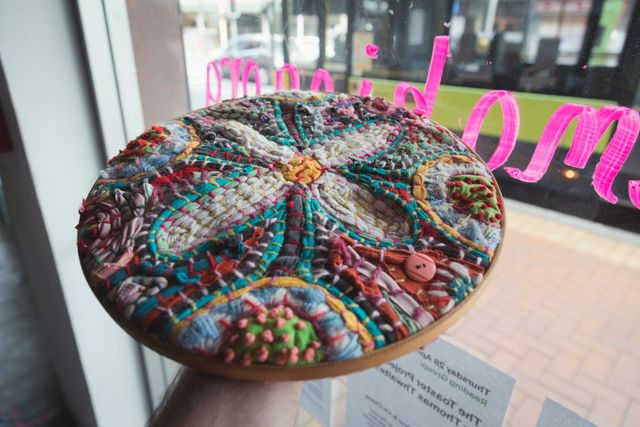
Making the World by Stella Peg Carruthers
- Urban Dream Brokerage
- <figure class=" sqs-block-image-figure intrinsic " > A Place for Local Making - Xin Cheng & Adam Ben-Dror | Image - Markuza Maric More than only fixing things, the Urban Dream Brokerage facilitated makerspace and online platform ‘A Place for Local Making’ took making to the next level of resourcefulness. Artists Xin Cheng and Adam Ben-Dror (with support from Grace Ryder) recently ran the pop-up focusing on creative remaking in central Wellington. Taking pre-loved materials as the basis for creative exploration, Xin and Adam forged local connections within the fields of waste-minimization. Equally, by hosting convivial events which opened up questions around the right to repair and the role of the designer in contemporary society, they fostered an alternative view towards cultures of making and living together. Through re-visioning the acts of designing, making, using and remaking, it was not only objects being re-created but also notions of community. Informed by Free University principles, resourceful makerspaces such as ‘A Place for Local Making’ meet the issue of waste head on in an egalitarian manner. Applying local practices to address global issues, resourceful makerspaces can be platforms for genuine community connection. This re-making of waste materials within a community context felt particularly pertinent in Wellington – a city recovering from a violent protest, with the cloud of Covid-19 still hanging low. Through coming together to fix and transform broken things and waste materials, people engaged with their material surrounds in new ways. Repair and remaking together can also regenerate community cohesion. <figure class=" sqs-block-image-figure intrinsic " > Creative Mending Circle coordinator & writer - Stella Carruthers | Image - Markuza Maric With a background in community education, textile crafts and a passion for sustainability, I joined ‘A Place for Local Making’ as a co-facilitator for the workshop ‘Creative Mending Circle’ in April. Influenced by strong ecological ideals and my own low-waste lifestyle, I was attracted by the resourceful use of waste applied in a community setting. To fix rather than throw out is a philosophy that serves both people and the planet. It is one I personally adhere to. It is also at the heart of Xin and Adam’s creative practices where they consider conviviality, sustainability, and ways of living in a waste-conscious way. As Adam said, ‘Sometimes it is hard to connect the act of gathering and working with these “waste” materials with global societal changes that have to happen in order for us to come into more harmony with the rest of life. They just seem so small. Xin pointed out to me though that these practices add to the diversity, that the world is a richer place because someone is practicing this kind of thing. It opens possibilities for other ways of living and adds up to something greater than the sum of its parts.’ As artists, Xin and Adam have been growing this idea of opening new possibilities through sharing the process of re-making. <figure class=" sqs-block-image-figure intrinsic " > Creative Mending Circle at A Place For Local Making | Image - Markuza Maric De-stabilising traditional hierarchies through re-making practices can democratise creativity. In the mending workshop I co-facilitated with Xin, we supported everyday people in giving new lives to clothing. Snaps on a shirt were both strengthened and adorned with brightly-coloured stitches. Meanwhile, children’s clothing and hard-wearing socks were patched to extend their useful lives. Taking an egalitarian approach to making, anyone could learn to add to and alter their world through making and remaking. As we face the challenges of the 21st century: the effects of the Anthropocene and the climate crisis, the COVID pandemic, a myriad of issues around waste... What is the role of the artist and the designer today? What kind of creative practices could there be, with locality and community at the centre? Xin and Adam approached their position as artists and designers by taking on a facilitator role. Whether it is running a practical workshop or hosting a reading group, both artists work with materials and ideas. More than ‘Think Globally, Act Locally’ – their approach is about thinking locally as well. <figure class=" sqs-block-image-figure intrinsic " > Frugal Electronics Workshop | Image: Markuza Maric Through amplifying and sharing innovative ways of (re)making at A Place for Local Making, fellow human beings were supported in designing to meet their own needs. This approach is based on Ezio Manzini’s ideas of diffuse design: people revisioning reality in a manner meaningful to their own context. The principles of small, local, open, connected help communities reimagine new ways of providing for their needs and community life. Adam and Xin talk about sharing resourcefulness, re-making and repair as ways of changing the culture of living. By taking the time to fix things at hand, doing so through working with our hands, and learning from each other, we are envisioning the possibilities for a different kind of collective future. In this future, social connections are made through non-hierarchical skill-sharing, across generational and demographic diversity. In the mending workshop I co-hosted, participants ranged from the elderly to early twenties. I enjoyed seeing a middle-aged mother showing a young man how to hem a shirt. Next to them, a younger woman helped thread a needle for an older lady. These exchanges are beautiful examples of people approaching repair as both life-enhancing and pleasurable. More powerfully, they are also moments where everyday people practice new (and ancient) skills for an uncertain future. Local skills and resources are utilised in the broadest sense, both in accessibility and value. <figure class=" sqs-block-image-figure intrinsic " > Frugal Electronics Workshop - Curator Grace Ryder & Artist Adam Ben-Dror | Image Markuza Maric Value and the associated idea of abundance are central to the discussions of making and social innovation at ‘A Place for Local Making’. Cherishing small acts of making, re-making and caring can reshape our mental models which give rise to values in life. ‘Time’s gone by so quickly!’ I overheard one participant say. ‘This mending thing, it’s slow… but it’s fun!’ Here, time became valued once again–not only for the results of the work done, but also for the creative enjoyment and the human connections which grew from time spent together. As a creative adventure, mending and (re)making is as much about the process as the end result. In their time at ‘A Place for Local Making’, Xin and Adam facilitated process-based creativity. They asked questions around waste and wants, value and needs, and they did so through reaching out rather than drawing in. Instead of making artworks to display on a wall, they supported community creativity through researching local waste streams and stories of remaking, gathering reclaimed materials for communal use and facilitating public events. Through the workshops and numerous examples of local (re)making documented on the online platform, we can see that with the toolkit of resourceful making and thinking, we can reconsider how we relate with our material surroundings. A product or object may be repaired to fulfil its original designed purpose, or adapted to new, future lives. To consider what happens to an object when it eventually leaves a person’s hands gives new meaning to the word resourcefulness. Here, as we learned at ‘A Place for Local Making,’ it can be fruitful to think of materiality in terms of what a thing is made of, how it is made and remade, who is doing the caring and remaking, as well as what it could become within a constantly changing, living world. <figure class=" sqs-block-image-figure intrinsic " > Contributors links Writer - Stella Carruthers Project - A Place For Local Making Artists - Xin Cheng + Adam Ben-Dror Photographer - Markuza Maric
- Accepted from Urban Dream Brokerage Blog by feedreader
- Tagged as:
- covid-19
-
-
-
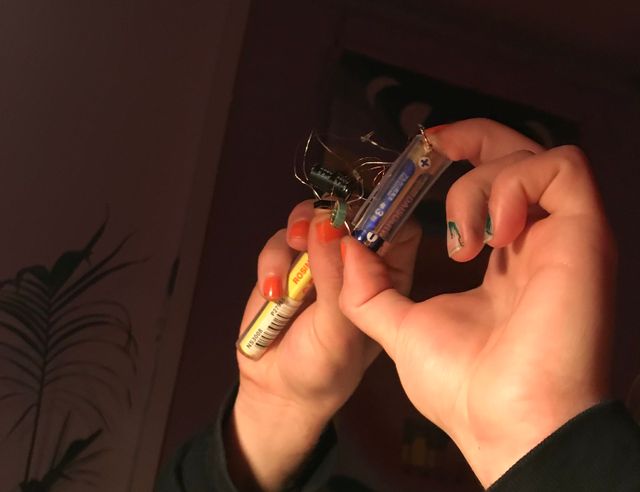
A Place for Local Making
- Urban Dream Brokerage
- A Place for Local Making is a co-creative hub for open-source making, where artists Xin Cheng (Tāmaki Makaurau Auckland) and Adam Ben-Dror (Te Awakairangi Lower Hutt) will welcome anyone to join them in an exploration of resourcefulness. Aiming to inspire imaginative and caring ways of making and living, A Place for Local Making invites inquisitive collaborators to bring in surplus materials and electronics, and to play, make and think with the materials, transforming them into useful or enjoyable things. Wishing to celebrate the local community of maker-carer-user-hackers, they also welcome anyone who makes, repairs and repurposes to share and showcase their invaluable creations.
- Submitted by tonytw1
- Automatically tagged as:
- art
- singing
Courtenay Central (Abandoned), Courage Lane, Te Aro, Wellington, Wellington City, Wellington, 6011, New Zealand (OpenStreetMap)
-
-
-
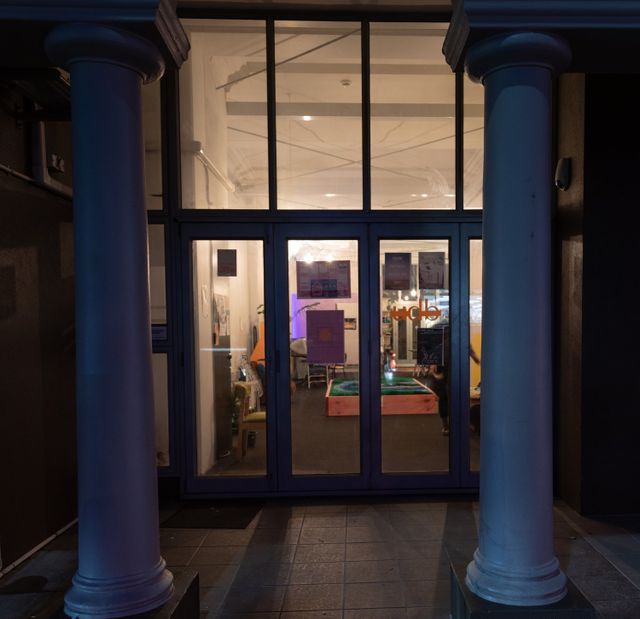
Commonspace - Live laugh love the alert levels
- Urban Dream Brokerage
- Commonspace is a ‘living room’ for the city, located at 113 Taranaki St until October 31st… so what happens when the room is closed in a nationwide lockdown? Courtney Rose Brown followed up her original writing about Commonspace asking Mouthfull (Ollie, Jack, Sarah and Racquel) about emerging from the lockdown.
- Accepted from Urban Dream Brokerage Blog by tonytw1
- Automatically tagged as:
- art
- singing
-
-
-
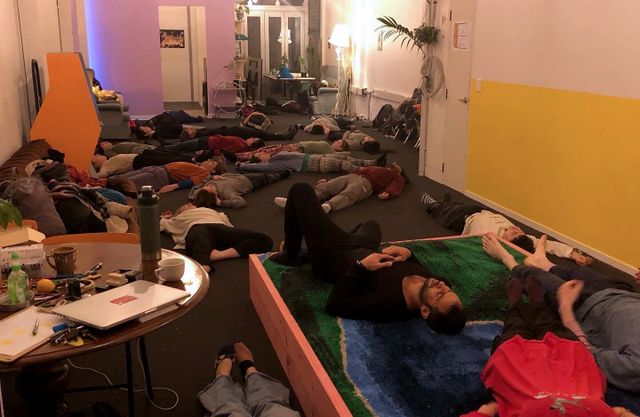
Commonspace - Who is this Mouthfull?
- Urban Dream Brokerage
- Urban Dream Brokerage is proud to have our second commissioned project open - Commonspace by Mouthfull Collective - with further support from Wellington City Council and Creative NZ.
- Accepted from Urban Dream Brokerage Blog by tonytw1
- Automatically tagged as:
- art
- singing
-
-
-
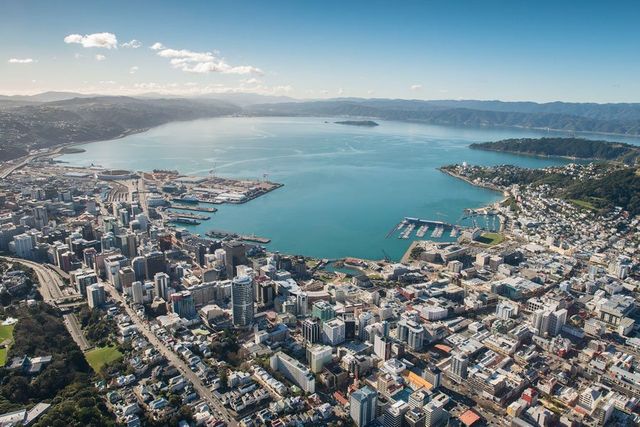
Next generation commissions announced for wellington city
- Urban Dream Brokerage
- Five public art commissions for vacant city spaces funded by Wellington City Council’s City Recovery Fund have been announced by public art organisation Letting Space and vacant space brokers Urban Dream Brokerage.
- Accepted from Urban Dream Brokerage Blog by tonytw1
- Automatically tagged as:
- art
- singing
-
-
-
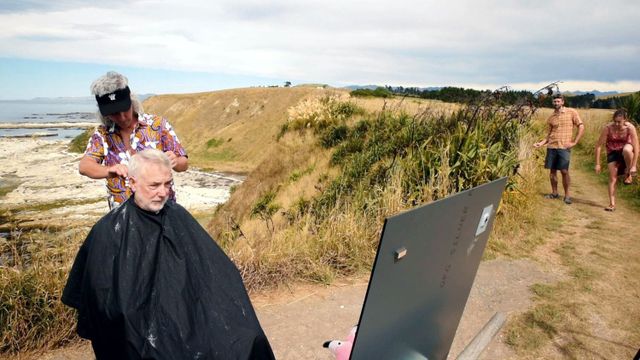
A Cut Above: Pip Adam gives Jason Muir a haircut
- Urban Dream Brokerage
- Two artists, two hairdressers and two friends: writer Pip Adam gives new Urban Dream Brokerage manager Jason Muir a haircut, teasing out in conversation the relationship between Muir’s new property brokering work and the hairdressing business.
- Accepted from Urban Dream Brokerage Blog by tonytw1
- Automatically tagged as:
- art
- singing
-
-
-
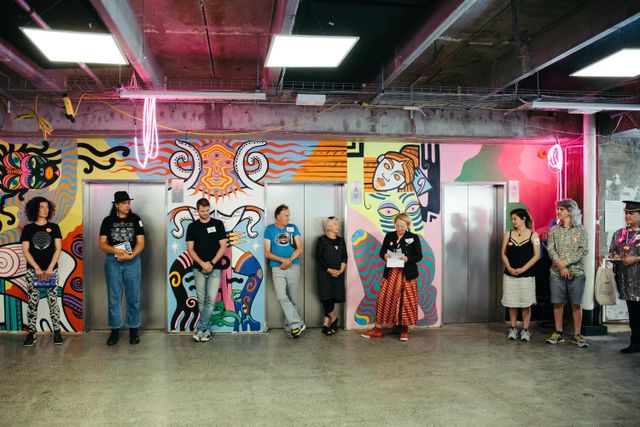
The role of vacant urban space in a Covid crisis
- Urban Dream Brokerage
- <figure class=" sqs-block-image-figure intrinsic " > Jan Bieringa, Sophie Jerram, Linda Lee and Jason Muir with 'Exquisite Kaitiaki' by Miriama Grace-Smith, Xoe Hall and Gina Kiel at Urban Dream Brokerage and Brokered Dreams book launch, 2/57, Wellington. Image: Ebony Lamb Wellington communities need more creative and public spaces as inner city population booms and housing crisis puts rental stress on the young and vulnerable Covid-19 and economic recession leaves empty shops and buildings empty in Wellington Urban Dream Brokerage programme will resume connecting artists with owners of unoccupied property Applications for artists to run projects are now open online www.urbanddreambrokerage.org.nz <figure class=" sqs-block-image-figure intrinsic " > Ariki Bloomwell presenting welcoming karakia. Image: Ebony Lamb As the residential property market escalates, and as increasing numbers move into city apartments, a need for inner city spaces for exchange and community is growing. With significant growth in commercial property left vacant since Covid-19 hit, the programme Urban Dream Brokerage is relaunching in Wellington to provide vital spaces for people to exchange, meet and help the city develop. Following its first run between 2012 and 2018 in response to the Global Financial Crisis, creative space programme Urban Dream Brokerage (UDB) has been relaunched funded by the Wellington City Council Tipu Toa: Build Back Better / City Recovery fund. <figure class=" sqs-block-image-figure intrinsic " > Image: Ebony Lamb The relaunch is spurred by a rise in unoccupied property around Wellington city due to the pandemic, and the need to create shared public spaces and experiences in a central city whose population is growing fast. The programme continues to run in Dunedin and has previously run in Porirua and Masterton. After the 2016 Kaikōura earthquake many buildings were taken off the Wellington market for strengthening, meaning fewer spaces could be used. Now property owners are embracing the renewed opportunity to enrich the city with artist and community occupied spaces. “We have a commitment to a city that feels good for the most vulnerable and gives space to the most generous. We see ourselves as intentionally curating projects that will provoke change, for example decarbonising and indigenising the city,” says UDB co-founder Sophie Jerram. <figure class=" sqs-block-image-figure intrinsic " > Victoria Singh from The Waiting Room Image: Ebony Lamb “Other cities across the world including Brussels and Barcelona are taxing buildings that are vacant for more than three months, providing incentives to keep buildings occupied, something that could work well when property is surging in value.” The aim of the brokerage is not just to help restore the city to pre-pandemic levels and types of activity, but to help create a new and better place where art acts as a bridge that welcomes all comers. UDB co-founder Mark Amery makes a case for culture providing a vital sense of place and meaning for city dwellers that leads to economic development. “A cultural recovery in Wellington is more than about attracting visitors through events. Culture is fundamental to our wellbeing and a sense of ownership of the city for those who live here. And we also invest financially where we feel a sense of belonging.” <figure class=" sqs-block-image-figure intrinsic " > Mark Amery and Helen Kirlew Smith. Image: Ebony Lamb A book of past projects Brokered Dreams: 98 Uses For Vacant Space has just been launched. “We also need to test new models of living space as we face environmental and social crises. Artists and community groups are leading the way,” says Amery. <figure class=" sqs-block-image-figure intrinsic " > Brokered Dreams: 98 Uses for Vacant Space. Image: Ebony Lamb Wellington City Council is supporting the brokerage to re-enliven the city in 2021 with activities, including support for the performance programme The City as a Theatre and a rejuvenated Cubadupa. UDB is produced by Maverick Creative, managed by dynamic Political Cutz performer Jason Muir with Linda Lee from Shared Lines Collaborative. Muir is already visiting property owners to find homes for projects. “UDB rules! My creative practice emerged from Urban Dream Brokerage so now I feel proud to manage the project and look forward to enabling others on their journey, to share their dreams with the people of Wellington,” says Muir. Urban Dream Brokerage was established in 2012 by Sophie Jerram and Mark Amery as part of their Letting Space entity under the umbrella of Wellington Independent Arts Trust. UDB found spaces around New Zealand for over 120 creative projects, some short and some long term with more than 40 property owners, allowing the artists’ work to infuse energy into the properties while new tenants were found. Some projects continue in the properties where they started - Come Sew With Me in Masterton’s Queen Elizabeth Park is celebrating this month its third anniversary, while others like Coliberate a ‘mental health gym’ are now successful innovative businesses. Brokered Dreams: 98 Uses for Vacant Space - the book is available at www.urbandreambrokerage.org.nz/book or at Unity Bookshop Wellington. <figure class=" sqs-block-image-figure intrinsic " > Evzen Novak, Thomas Lahood, Darcy Case Laurie Foon, Suzanne Tamaki and Gerry Paul during karakia. Image: Ebony Lamb <figure class=" sqs-block-image-figure intrinsic " > Sam Trubridge. Image: Ebony Lamb <figure class=" sqs-block-image-figure intrinsic " > Crowd at two/fiftyseven. Image: Ebony Lamb <figure class=" sqs-block-image-figure intrinsic " > Image: Ebony Lamb
- Accepted from Urban Dream Brokerage Blog by tonytw1
- Tagged as:
- cubadupa
- theatre
- porirua
- covid-19
Porirua, Wellington Region, New Zealand (OpenStreetMap)
-
-
-
We're back!
- Urban Dream Brokerage
- <figure class=" sqs-block-image-figure intrinsic " > Young Visionaries Tēnā koutou katoa We come with great news! We are delighted to write that the Urban Dream Brokerage is relaunching in Wellington city (see the website), with support from the WCC City Recovery Fund for the first year. We are now open for new applications from both citizens with new ideas for vacant space to increase public participation in the city, and from property owners with vacant space that needs enlivening. UDB continues to be funded through the Wellington Independent Arts Trust but Letting Space (Mark Amery and Sophie Jerram) are announcing the handover to Maverick Creative led by broker Jason Muir and staff Linda Lee and Tallulah Farrar. We have been in discussion for some time, and Mark, Sophie (and past brokers Helen Kirlew Smith and Tamsin Cooper) are professionally involved in training and overseeing the establishment of the UDB over the first six months. Excitingly, Letting Space are also curating six commissions with WCC funding for UDB in 2021 (details here). Pencil in the busy Xmas diary a rather special launch celebration for Thursday evening 17 December 5.30pm at Level 2 57 Willis Street (above Unity Books) which will see the launch of a UDB Book 2012-2018, Brokered Dreams, and the introduction of a raft of exciting programmes for early 2021 Theatre as a City with Performance Arcade, Cubadupa, and the dynamic new artist powered work space we are in for that evening Two/Fifty Seven. More details to follow. RSVPS required,. Many exciting ideas and property relationships are already in development and we are all so thankful for the support and enthusiasm this is already receiving at a vital time for Wellington city, and indeed the planet, to look for new models of being together in urban environments as we see apartment blocks rise, income and property inequality issues, significant wasted vacant space as we potentially face a recession and dramatic new challenges with Covid and environmental factors. Urban Dream Brokerage is a mechanism for all in our community to lead. Our aims remain as follows: Increase diversity and community through living spaces in the city. Reduce vacant space and increase citizen ownership in towns and cities. See stronger representation of mana whenua in the city. Increase professionalism and help innovate business development. See creatives, artists and community service groups resident long term in the CBD. Increase mixed use of the city's building stock. Increase public engagement in the city See our cities known for their innovative use of space and public interaction. We are excited to be working in closer partnership with major creative partners like PlaygroundNZ and Creative Capital Arts Trust, WCC, Wellingtonnz and major property partners to support independent artists, community organisations and creative-minded citizens to occupy this special city. We are a service for the whole city and want to hear from you. We can’t wait to celebrate together.
- Accepted from Urban Dream Brokerage Blog by tonytw1
- Tagged as:
- covid-19
- cubadupa
- theatre
Cuba Street, Te Aro, Wellington, Wellington City, Wellington, 6040, New Zealand (OpenStreetMap)
-
-
-
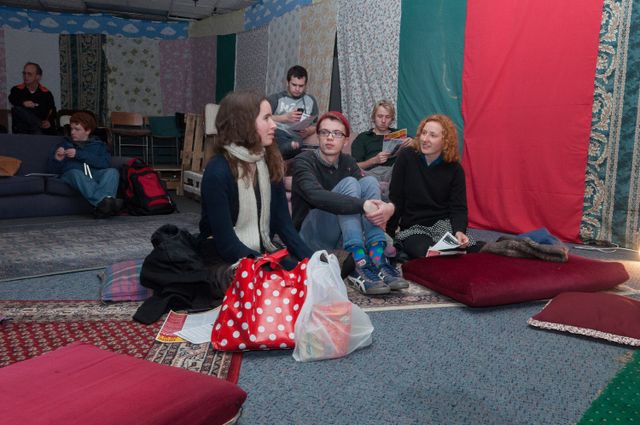
Embedding Artist Space in the City: Co-Design the Manifesto
- Urban Dream Brokerage
- <figure class=" sqs-block-image-figure intrinsic " > People’s Cinema, Urban Dream Brokerage, Manners Street, 2013-15 Tuesday 12 March 2019, 10am-5pm Atrium, Te Aro Campus, Victoria University of Wellington, Vivian Street $25 - Covers Lunch. Register Here Now Enquiries: mark@lettingspace.org.nz Temporary art projects in cities are well and good while there’s space for them. As seen in Wellington with Urban Dream Brokerage, Letting Space over the last 9 years, and in numerous independent examples over decades: they enliven, develop city identity, transform spaces and seed new arts infrastructure. But, when a city is gentrified – with artists’ residence safely contained within events – the ability to enable the change artists inspire and provide in a city is limited. It is in allowing for the common spaces that things seed in vibrant, resilient cities. This is a call to artists of all stripes to join Letting Space and the artists in the city for a day to sprint-write a manifesto of actions to support artists with space in Wellington to be presented to Wellington City Council for its Decade of Culture (2018-2028). This is our shared development space for independent artists in Wellington. What models do you like? What has worked here? What are the opportunities we could be taking up? How do we seed more permanent development space? From big ideas – taxes on empty buildings – to the more immediate actions - guidelines on working with property owners. From new performance residency spaces to artist group housing, these models have proven to be vital to cultural cities’ vibrancy. Let’s empower change together. Best, Sophie Jerram and Mark Amery February 2019
- Accepted from Urban Dream Brokerage Blog by tonytw1
- Tagged as:
- events
-
-
-
Embedded Artist proposal
- Urban Dream Brokerage
- This link gives you access to a document presented to Wellington City Council. proposing an Embedded Artist pprgeamme in 2018 The project remains unfunded. Feel free to use (cite as from Wellington Independent Arts Trust) and let us know how you get on. Onward… With love, Sophie, Mark and all at the Wellington Independent Arts Trust
- Accepted from Urban Dream Brokerage Blog by tonytw1
- Automatically tagged as:
- art
- singing
-
-
-
Urban Dream Brokerage to close in Wellington with a call to support artists developing work independently in the city
- Urban Dream Brokerage
- <figure class=" sqs-block-image-figure intrinsic " > Brides, Barbarian Productions, Bowen House, 2013 A letter to our city, our artists, our property owners, our supporters. We have loved changing Wellington City’s dynamic through Letting Space’s Urban Dream Brokerage service - with thanks to some remarkable creative people, property owners and the funding of the Wellington City Council and Wellington Community Trust. Over the past five and half years, Urban Dream Brokerage in Wellington has placed over 300 creators and artists in 45 spaces with 61 projects. Images and details of these can be found here, including three new, current projects. Some have been short, others have lasted much longer – the amazing group Coliberate have just finished 18 months running a mental health gym in Featherston Street, for example. On 30th June we come to the end of a three-year contract with Wellington City Council for the delivery of the service. Letting Space has made the decision not to renew this contract. Rather we will do new work under the auspices of our trust, the Wellington Independent Arts Trust. We all continue to look for ways to make Wellington a diverse and people-oriented place. In terms of the brokerage, property owners will tell you they are facing unprecedented issues with earthquake strengthening plus a far higher demand for retail spaces in the city than when we began, during a recession. It has got harder and harder for us to find spare spaces in a popular little city. It remains key work to provide infrastructure for independent artists. This is our challenge to council, to organisations, to all: if you wish Wellington to remain creative you need to prioritise directly supporting the city's most dynamic artists, through funds or resources such as space. It is in their hands, not established organisations or events, that the future lies. This needs new and different energies right now. We also need to celebrate and thank our city. The UDB projects have seen artists and other creatives consistently and uniquely challenge the expectation of the city’s offerings. They have helped us recognise that our city needs to provide diverse living spaces for all, where many people feel included and new ideas can take shape. Where artists and other creatives have the space to grow new enterprises and ways of working, developing their own interaction with the city. This has led to us working in Dunedin - where a programme now thrives, and programmes in Porirua and Masterton, as well as providing inspiration and advice to other cities nationwide and overseas. We’ve helped along the way with the development of proposals with many groups and in this last year have offered a monthly lunchtime gathering and podcast and, currently, a mentoring programme. We’ve loved working with artists and makers, helping them see their ideas to fruition. Many have gone on to develop stronger practices and businesses as part of the city. We continue to believe this kind of work is vital and special to Wellington’s identity. A place where artists feel they can be part of the city’s fabric. It’s something that helped the notion of being a ‘creative capital’. We’re thrilled to see artist run spaces like Te Haukāinga, meanwhile and play_station join others in the CBD in the last two years – artists are stepping up and taking on property. Others also need to lead and some are looking for space. In May 2017 we conducted focus groups and surveyed of artists with experience in working in unconventional spaces about what they really need to stay active and sustained in Wellington. A report on this can be found here. We think it’s time to heed the lead of authorities like Dunedin City Council currently and work actively to see how artists can be more embedded in infrastructure. Artists need more than event presentation space and promotion - they need space for development, where they can collaborate and be more part of the city. They suffer from a lack of the working spaces and connections that other creatives are gaining from co-share working spaces. Artists need to be funded to be artists - to develop, think and contribute to Wellington’s public, private and government institutions. It’s about artists working to be more embedded dynamic activators of the city. And it’s about recognising artists’ time and need for development potential, rather than seeing them as temporary pop-ups, or as free agents of lightweight cool projects. It's about seeing them as contributors to our city’s development. We hope Urban Dream Brokerage has helped challenge what exchange means for Wellington’s CBD - non-commercial activity as a vital part of the urban infrastructure. Projects like Moodbank, People’s Cinema, Co-Liberate, Political Cuts, to name a few, have gone on to have lives in other places, following the legacy of Letting Space produced and curated projects in the city like Kim Paton’s Freestore. Temporary sometimes leads to permanent, but even without physical legacy we think the traces of the network that has been created have a lasting resonance for many creators in Wellington. Urban Dream Brokerage ends in June but we are encouraging others to pick up the challenge to do this work. Never underestimate the generosity there is amongst property and business owners who understand how value in a city needs to work in different ways and are committed to Wellington’s arts ecosystem. Expect knockbacks, but hold to your vision! We are making our resources, forms and processes available through Creative Commons for anyone to pick up. A link to these will be posted on our website, our blog and through our social media threads soon. All three of us are looking forward to continuing to work with our many dear friends and valued colleagues to continue to make Wellington such a special place to live and work. Thank you for the amazing work you do. Ngā mihi, Helen, Mark and Sophie Letting Space
- Accepted from Urban Dream Brokerage Blog by tonytw1
- Tagged as:
- porirua
- earthquake-strengthening
- events
Porirua, Wellington Region, New Zealand (OpenStreetMap)
-
-
-
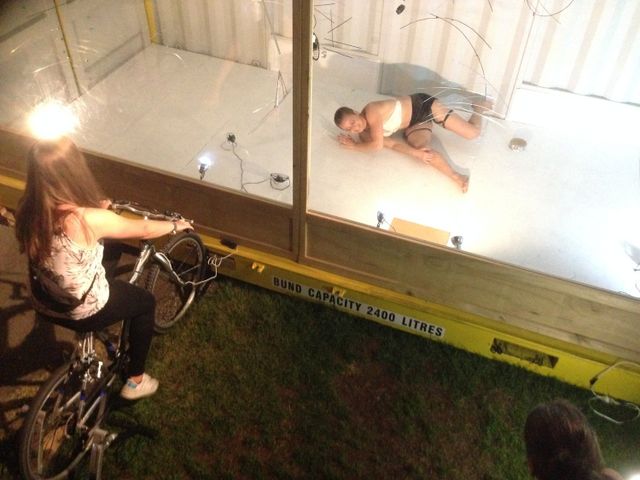
Mentoring announced for three Urban Dream Brokerage projects
- Urban Dream Brokerage
- <figure class=" sqs-block-image-figure intrinsic " > 'We Spoke', Candace Smith, Performance Arcade, Wellington, March 2018 Letting Space's Urban Dream Brokerage service is thrilled to announce three artists and projects in Wellington that have been given mentors in a new peer-to-peer mentorship programme for artists working in new spaces in the city. Candace Smith will be mentored by artist Vivien Atkinson, who works across a variety of media and is known for her work with The See Here and Occupation Artists (website here). Candace's series of public works has commenced with installation 'We Spoke' at Performance Arcade, in which the public generated energy with a bicycle, operating fans within a transparent space, sealed from the wind, which gently moved mobiles made from umbrella parts (themselves deconstructed by the wind). A performer joined the work in response to the cyclists at night. Candace is interested in creating installations of reassembled objects which explore ideas around the fragmentation and reconnection associated with migration. Rosie White and the project Playdate will be mentored by Jo Randerson, artist and co-producer of Barbarian Productions (website here). White has recently completed a Masters of Fine Arts at Massey's College of Creative Arts and will work with collaborators' on a project that is a work of craftivism or art activism, concerned with a social issue: slavery, with specific concern to the significant numbers of people in the world today trafficked for sex. New Zealand says Rosie is not exempt and the project will seek to highlight the issue. Visual artist Mark Antony Smith and his project The Lost Future Exchange will be mentored by theatremaker Leo Gene Peters of company A Slightly Isolated Dog. This is a project Mark Antony is starting in 2018 to gather stories, dreams and remembrances of place in the central area of Wellington. It is an evolution of Ghosting About a project he did for his Masters study at Massey which included work 'Imperial Ghosts' concerning Dixon Street's Imperial Building for Lux Festival. Mark Antony Smith's previous shows also include Black Dog: Failure at Toi Poneke Gallery 2015. We hope to announce a fourth mentored project shortly. Initial information on the kaupapa behind this mentoring scheme can be found here.
- Accepted from Urban Dream Brokerage Blog by tonytw1
- Tagged as:
- theatre
-
-
-

Announcing Urban Dreams Monthly Lunchtime programme 2018
- Urban Dream Brokerage
- <figure class=" sqs-block-image-figure intrinsic " > Thomas King Observatory, Wellington, work residency for artist Julian Priest in 2018 with thanks to the Wellington Museums Trust. Introducing for your diaries the Urban Dreams Monthly Tuesday lunchtime programme for March to May 2018 at Toi Poneke. We've got a great set of guests, across artforms: Leo Gene Peters, Julian Priest, Sacha Copland, Kerry Ann Lee and our mayor Justin Lester. We're always aware of the holes in knowledge between artforms even in a small city, so read on for more details on these strong artists. First gathering: next Tuesday March 13. An opportunity for artists or all kinds to network and discuss ideas working in new ways in Wellington city. Tuesdays 12.30-2pm March 13: On being embedded. Working with other industries and groups - what is the potential for residences or having artists embedded in different spaces in the city? We talk with two artists who have been working in work residencies and have an interest in how their work can interact in new ways through this: theatremaker Leo Gene Peters, and visual artist Julian Priest. Leo Gene Peters is a theatre director and maker and founder of A Slightly Isolated Dog who have been creating celebrated devised work since 2005. “We’re trying to have a conversation with the public about what matters to each of us… and through that conversation we’ll create performance work. The goal is to find new and different ways to use live performance, conversation, virtual platforms, social media (and other things) to create a space where we can meet and reflect together. A space where we can discuss important questions in our lives that we normally don’t talk about with strangers.” A Slightly Isolated Dog are currently in residence at Creative HQ. who aim to help develop and grow businesses in Wellington through “nourishing entrepreneurial talent and driving innovation.” Julian Priest is an artist working with participatory and technological forms and recent work explores relationships to different infrastructures including time, energy, security, health and communications. In 2017 Julian created the Citizen Water Map Lab with Letting Space as part of the Common Ground Public Art Festival where Hutt City residents and community groups were invited to collect ground water and bring it to the lab and test it with data represented in an illuminated installation that produced a map of local water quality. Julian was co-founder of early wireless freenetwork community Consume.net in London. He became an advocate for the freenetworking movement and has pursued wireless networking as a theme in fields of arts, development, and policy. Julian is currently undertaking a residency at the Thomas King observatory Wellington (supported by the Wellington Museums Trust), an old 1912 observatory which is part of the Carter Observatory complex. April 17: On the art of keeping in business. Sasha Copland and Kerry Ann Lee. The realities of the business of being an independent artist. We introduce two artists both interested in working in a variety of different ways with the public and communities. Kerry Ann Lee is a celebrated visual artist, designer and educator who uses hand-made processes and socially-engaged projects to explore hybrid identities and histories of migration. She creates installation, publication and image-based work and has a long practice in independent artists’ publishing. Sacha Copland is a dancer, choreographer and the Artistic Director of Java Dance Theatre. As she told The Big Idea here she believes in the power of dance to build empathy and her works aim to permeate and dissolve the distance between people by creating dance that “clambers into your senses and gets underneath your fingernails.” Founded in 2003 Java is a professional dance company that presents dance theatre nationally and internationally often working in site specific locations, or creating work around specific themes that engage new audiences. May 8: On creating creative capital. Mayor Justin Lester A discussion with our mayor who holds the arts and culture portfolio on what is needed to take our creative scene to the next level. All events are free. You are very welcome to bring your lunch. For podcasts of the 2017 series go here.
- Accepted from Urban Dream Brokerage Blog by tonytw1
- Tagged as:
- events
- theatre
-
-
-
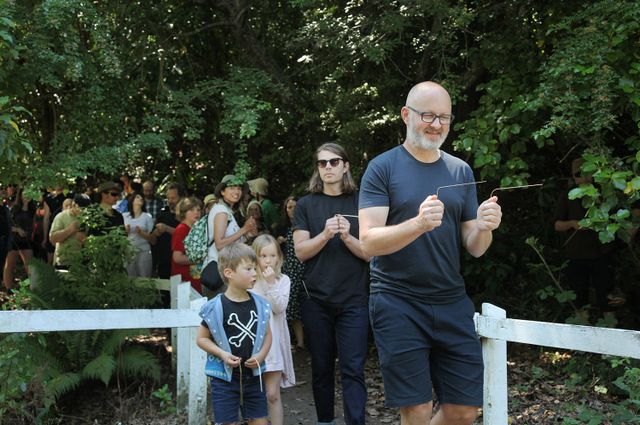
Dunedin artists boosting environmental awareness and biodiversity
- Urban Dream Brokerage
- <figure class=" sqs-block-image-figure intrinsic " > Josh Thomas (an Urban Dream Brokerage Advisory Board member) heads the water diviners at the opening of Awa HQ. Image: Justin Spiers. Water divining in the Dunedin town belt has kicked off the first of two innovative public art commissions, which sees artists respond to the city’s environmental needs as part of Te Ao Tūroa, Dunedin’s Environment Strategy. In a programme called Environment Envoy, Dunedin’s Urban Dream Brokerage announce two projects following a call for proposals in August: Awa HQ, a collaboration by Angela Lyon, Aroha Novak and Charlotte Parallel dedicated to Dunedin’s Toitū stream, and What Grows Where You Live, a project led by artist Ruth Evans involving revegetation and artwork creation with native plant species. The commissions, worth $6500 each, are part of Dunedin's Urban Dream Brokerage service, funded by Dunedin City Council and supported by national public art organisation Letting Space. “We are working to encourage Dunedin’s community to see their local environment in new ways, and specifically to get more action happening to increase biodiversity,” says Dunedin City Councillor and Te Ao Tūroa Partnership Chair David Benson-Pope. “The city is also using and creating strong partnerships between different sectors to deliver a better natural environment. Artists have a vital role to play in all of this – from making new connections and encouraging partnerships to enabling people to see their world from completely different perspectives.” Awa HQ acknowledges Toitū stream, hidden within Dunedin’s CBD, provides a vital connection to Dunedin’s environment and heritage. The project looks at the history, condition and relationships of the stream by gathering together diverse stories, experiences and responses. Treating the stream as a living entity, the artists were inspired by the passing of the Whanganui River Claims Settlement Bill, which in March which gave the Whanganui River, Te Awa Tupua, the same status as a legal person. The project was launched with a picnic and a water divining hikoi with Stephen Kilroy and Taonga Pūoro artists Jennifer Cattermole and Jessica Latton on 25 November. They are now inviting other artists to respond to their call this coming weekend Saturday 9 December 12pm to 4pm by presenting work at Awa HQ, an empty lot at 175 Rattray Street, Dunedin, beside the now concealed stream. Featuring a range of performances, actions, discussions and picnics Awa HQ will culminate in a final hikoi on Saturday 17 February 2018. The second project What Grows Where You Live embraces the biodiversity available in Ōtepoti/Dunedin. Focusing on the plant species raupo, harakeke, kowhai and poroporo, the project begins by working with private and public landowners to introduce native flora across the greater Dunedin region through planting schemes. Materials will be gathered from these sites to be used in constructing art works hosted in a vacant space in Dunedin’s CBD in April 2018. The exhibition will feature workshops for skills and knowledge sharing, and a zine providing understanding of where these plants grow, how to source them, and their traditional application in Māori society. “The Environment Envoy projects will engage more of our community in the work to achieve the goals of Te Ao Tūroa,” says Councillor Benson-Pope, “and also strengthen collaboration between artists and the public, iwi, scientists, councils, business and community groups. We all have a key role to play in enhancing our environment.” For more information: contact Katrina Thomson email: envoy.udb@gmail.com
- Accepted from Urban Dream Brokerage Blog by tonytw1
- Tagged as:
- exhibitions
- town-belt
-
-
-
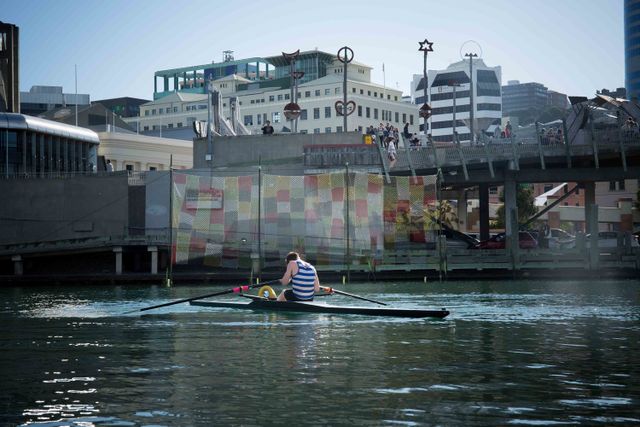
Supporting working in city spaces
- Urban Dream Brokerage
- <figure class=" sqs-block-image-figure intrinsic " > Sora Ami, Yasuaki Igarashi, Shared Lines: Wellington, October 2017.
- Accepted from Urban Dream Brokerage Blog by tonytw1
- Automatically tagged as:
- art
- singing
-
-
-
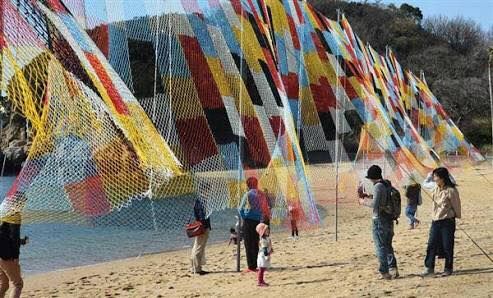
Knitting the Sky in Wellington
- Urban Dream Brokerage
- <figure class=" sqs-block-image-figure intrinsic " > “Knitting nets is universal.
- Accepted from Urban Dream Brokerage Blog by tonytw1
- Automatically tagged as:
- art
- singing
-
-
-
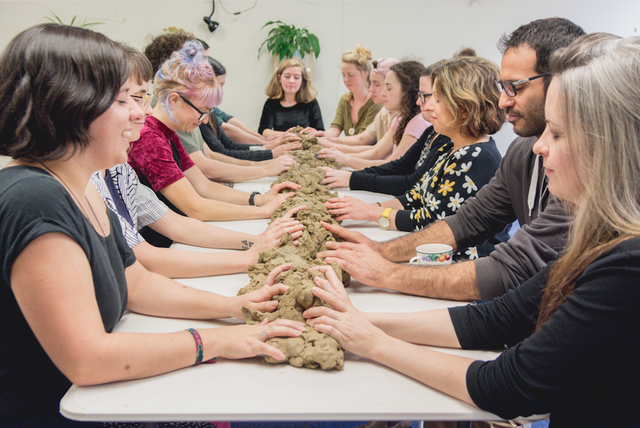
Holding the Space for Mental Wellbeing in the Wellington CBD
- Urban Dream Brokerage
- <figure class=" sqs-block-image-figure intrinsic " > "Our popular date-night relaxation choice: Mindfulness with Clay.
- Accepted from Urban Dream Brokerage Blog by tonytw1
- Automatically tagged as:
- art
- singing
-
-
-
Making Masterton Dreams Realty
- Urban Dream Brokerage
- <figure class=" sqs-block-image-figure intrinsic " > On Wednesday 28 June a spirited group of Masterton people came together for an open community meeting at Te Patukituki (the former Greenworld with its beautiful wooden open ceiling), 15 Queen Street to hatch connections and ideas for the pilot Urban Dream Brokerage in Masterton. It was time for many introductions, percolating ideas and wishes, plus an impromptu display from Heather Bannister of some beautiful vintage sewing machines - which she has schemes (with at least 100 she says in her collection!) to see not only on display, but in use by young and old. It was a pretty remarkable group of about 20 representing a diversity of the community: young and old, Maori and Pakeha, newcomers to the region hungry for initiatives and older timers with a lot of history to share. Even those who professed to not being creative expressed interests that suggested they had plenty to bring. Jade Waetford of Te Patukituki opened the hui. Te Patukituki is a fledgling community and carving space with some beautiful vision for enabling more young and Maori to feel part of the Masterton CBD, run here in this special space with the support of the Masterton Lands Trust. We’re really looking forward to working with them in partnership to see more community life in this special northern end of the CBD. Things are seeding in Masterton. Our call out to all in the community is to think about what causes they’d like to further, collections they know of in backrooms and garages that deserve wider exposure, or ideas for the CBD they could trial (be it an event in open space or project in a vacant space). What ideas could be brought to life that demonstrate some different aspects of this town? If you’ve got something even starting to percolate drop Anneke Wolterbeek the Urban Dream Broker a line at udbmasterton@gmail.com to talk more on how a dream could be ‘realty’. Images: Anneke Wolterbeek <figure class=" sqs-block-image-figure intrinsic " >
- Accepted from Urban Dream Brokerage Blog by tonytw1
- Automatically tagged as:
- art
- singing
-
